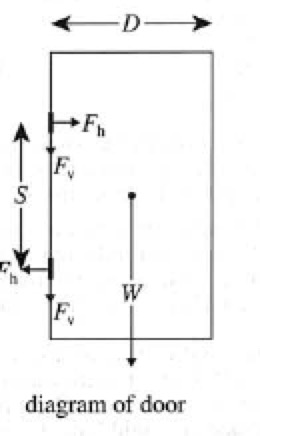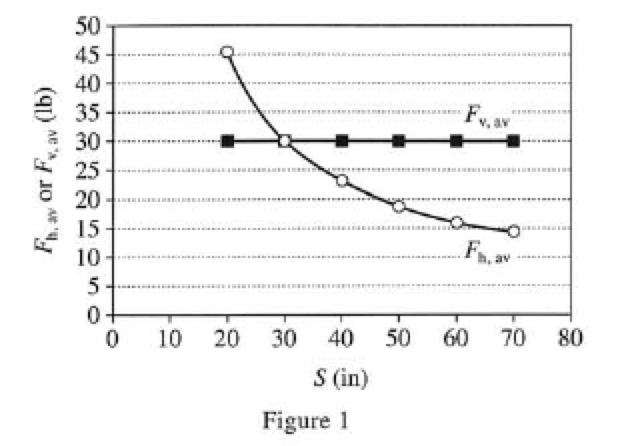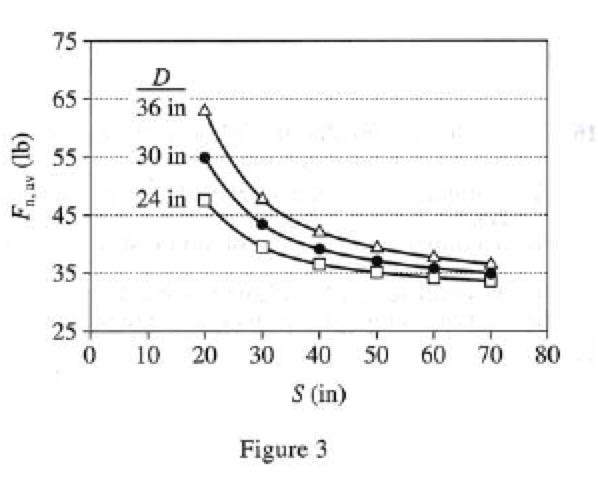Questions 21-27 are based on the following passage.
Physics students performed 3 studies to determine the forces that several doors exerted on their hinges. The doors had various weights, W, and widths, D. Each door had 2 hinges; the hinges could be moved to vary the distance, S, between them. None of the doors had a doorknob.
The 2 hinges on each door were equidistant from the center of mass of the door (see the diagram).
Each hinge was fitted with 2 force sensors. With the door attached to a door frame, one of the sensors detected the horizontal force exerted by the door on the hinge, Fh , and the other sensor detected the vertical force exerted by the door on the hinge, Fv. Once Fh and Fv were determined for each binge, Fh was averaged over the 2 hinges, yielding the average horizontal force per hinge, Fh,av, and Fv. was averaged over the 2 hinges, yielding the average vertical force per hinge, Fv,av. From Fh,av and Fv,av, the average net force per hinge, Fn,av, could be calculated.
In the 3 studies, all forces were recorded in pounds (lb) and all lengths were recorded in inches (in).
Study 1
For a door with W = 61 lb and D = 30 in, the students determined Fh,av and Fv,av at various S. The results are shown in Figure 1.
Study 2
For 3 doors, each with D = 30 in but a different W, the students determined Fn,av at various S. The results are shown in Figure 2. 
Study 3
For 3 doors, each with W = 61 lb but a different D, the students determined Fn,av at various S. The results are shown in Figure 3.